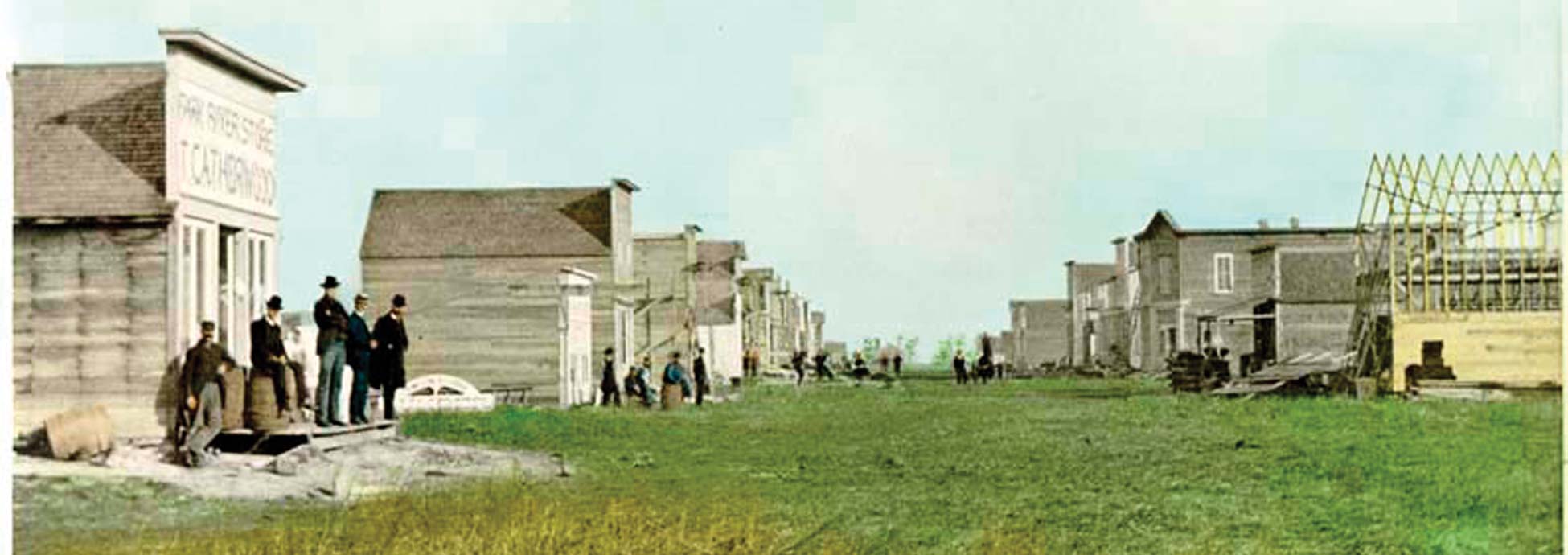An immigrant train had both passenger cars and boxcars. The passenger cars were very plain with wooden benches as seats. The cars were crowded, stuffy, and uncomfortable. Coal-burning stoves were used to heat the cars. By the time the passengers reached their destinations, they were covered with soot from the burning coal.
At the railroad yards in St. Paul, hundreds of immigrant cars waited to carry homesteaders to North Dakota. The immigrant trains transported not only immigrants but also people from other states who were headed for North Dakota to file homestead claims or purchase land. The trains filled up quickly, and many of the passengers had to stand or sit on the floor.
Boxcars on the immigrant trains could be rented by families to transport their belongings. Some people brought farm animals, plows and other farm implements, furniture, and household items. Others traveled lightly, intending to buy their materials in a town near their claim.
All food needed on the trip for both the settlers and their animals had to be brought along on the train. Sometimes a family set up a cookstove in their immigrant car so that they could bake bread and prepare meals.

Figure 69. Homesteaders heading for North Dakota by train about 1900. (SHSND 0090-0207)
The homesteaders traveled as far as they could on the train and then figured out how to get to their claim from the trainstop. If they had wagons and horses with them, they could drive. Some towns had livery stables where horses and carriages could be rented. If settlers had no means of transportation from the trainstop to their claim, they had to walk, often many miles.

Figure 70. Main Street, Park River, Dakota Territory, 1885. (Hultstrand Collection, Institute for Regional Studies, NDSU, 2028.225)
Another way that European immigrants could get to North Dakota was through Canada. The Canadian immigration port on the East Coast was Halifax, Nova Scotia. If ships docked at Halifax, immigrants could take immigrant trains through Canada. Many immigrants who took the Canadian route worked for some time in lumbering or other jobs in Canada before coming to North Dakota.


